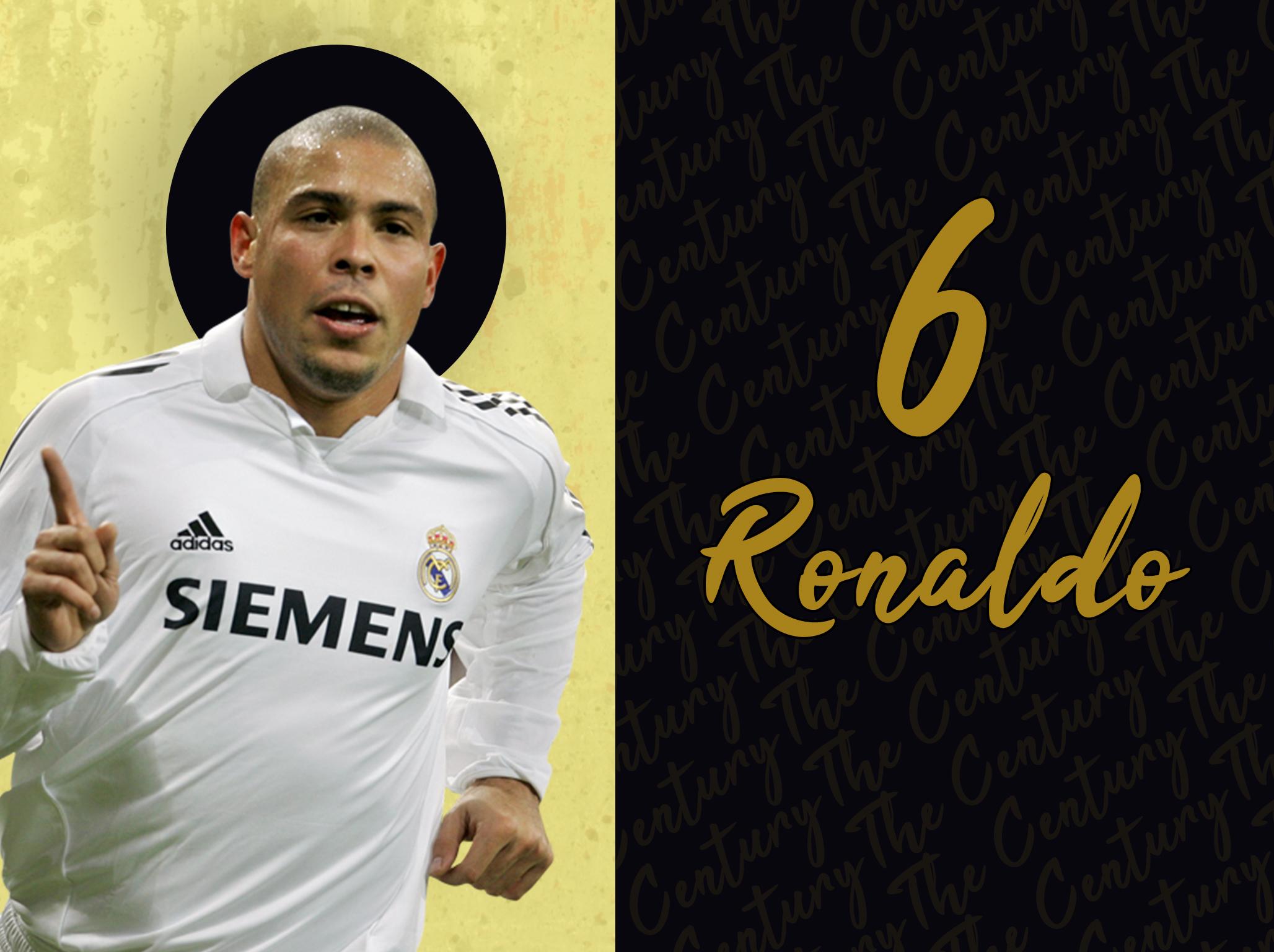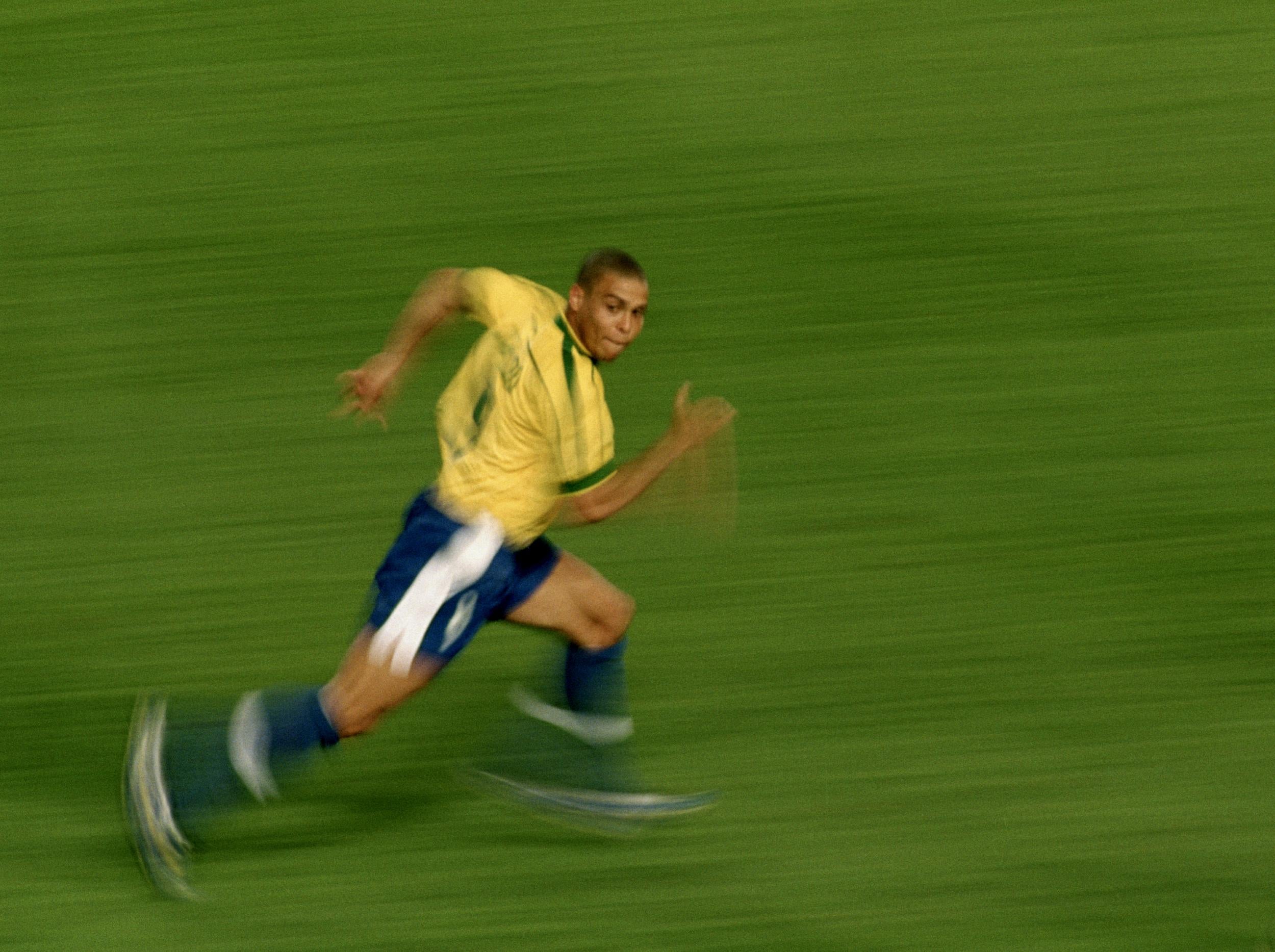Everything you thought you knew about Ronaldo is wrong
The Century: This week, The Independent is counting down the 100 best players of the last twenty years. At No 6 is the most misunderstood player of the millennium

Your support helps us to tell the story
From reproductive rights to climate change to Big Tech, The Independent is on the ground when the story is developing. Whether it's investigating the financials of Elon Musk's pro-Trump PAC or producing our latest documentary, 'The A Word', which shines a light on the American women fighting for reproductive rights, we know how important it is to parse out the facts from the messaging.
At such a critical moment in US history, we need reporters on the ground. Your donation allows us to keep sending journalists to speak to both sides of the story.
The Independent is trusted by Americans across the entire political spectrum. And unlike many other quality news outlets, we choose not to lock Americans out of our reporting and analysis with paywalls. We believe quality journalism should be available to everyone, paid for by those who can afford it.
Your support makes all the difference.There’s a famous still photograph of Ronaldo from the 1998 World Cup, taken by Ross Kinnaird of Getty Images during Brazil’s group game against Morocco. Ronaldo is sprinting at full pelt, his arms and legs pumping so powerfully that they are no longer individually distinguishable as limbs: a pure blur of motion, a body working faster than the eye can follow. And yet the gaze is drawn, instead, to Ronaldo’s head, which by stark contrast is completely still: the expression calm, the mind free of interference, the eyes fixed devastatingly on their target.
It’s the quintessential Ronaldo image – indeed, one of the great football images – for its ability to capture, in a single shot and free of context, the simple synthesis of motion and stillness that defines the very greatest athletes at their peak. You didn’t need to be told that Ronaldo was the best striker in the world, or even a striker at all. You didn’t need to know that this was the biggest stage of them all, and that he owned it completely. And you didn’t need to be able to see the goal to know exactly where he was headed.
To look back now at Ronaldo’s performances in that tournament is to be struck by a certain wistfulness: the freshness and immediacy of the moment itself, inflected with the knowledge of what would follow. A few weeks after the Morocco game, Ronaldo would infamously and disastrously start the final against France despite being patently unfit. The following year – two decades ago this month – he was playing for Inter in a perfunctory 6-0 win over Lecce when his knee gave way, ushering in a new and painful chapter that would be marked by persistent injury and sad, irrevocable decline.
And so, there’s a tendency to regard Ronaldo’s career as so much so-what. A talent unfulfilled. A legacy overshadowed. A cathedral in a world of skyscrapers. Everything that was his by right is his no longer, from his World Cup goals record to his own name. These days you can’t even search for him on the internet without adding the qualifying phrase “-cristiano”. He’s the inferior Ronaldo, the Brazilian Ronaldo, the fat Ronaldo.
Indeed, if you’re under the age of around 24, having grown up in the jaw-dropping era of Leo and CR7, you might find it hard to summon much excitement for a player whose peak lasted only around five years, who never played in a Champions League final, and is now probably best known for a bad haircut and a Nike advert. Yet to view Ronaldo’s achievements in the context of who came after him is not only an irrelevance, but an injustice. Yes, Messi and the thin Ronaldo may ultimately have surpassed him. But in a way, they were playing a game that he had invented.
Who were the pre-eminent strikers in world football during the early 1990s? Broadly, they fell into two categories: lethal penalty-box hunters like Jurgen Klinsmann, Gabriel Batistuta or Marco van Basten, or artful link men like Roberto Baggio, Eric Cantona or Hristo Stoichkov. Ronaldo’s great leap forward was to combine the two – the positional flexibility and technical excellence to receive the ball anywhere on the pitch and move it towards goal, and the ruthless instinct to see openings and finish chances – in a single terrifying package.
In short, Ronaldo raised the bar for strikers everywhere, in a way that nobody since Pele had really managed. “He did things nobody had seen before,” said Thierry Henry. “You didn’t have that kind of football player before and you don’t have it today,” said Zlatan Ibrahimovic. Sergio Aguero describes him as the greatest influence on his career. Messi describes him as his footballing hero. For the generation of one-man wrecking balls who would follow in his wake, he was the standard-bearer, the one who rewrote the boundaries of the possible.
For the rest of us mere mortals, he was pure sporting theatre. I remember watching a World Cup qualifier between Brazil and Argentina from a bar in Rio de Janeiro. It was about 2004 and the lightning, frightening pace of his younger years had long gone, but what never evaporated was the sheer frisson of potential, the volt of electricity that pulses up the spine when a great player receives the ball. Grown men and women howled at him the way they do at God: screeching, beseeching, certain of his greatness but pleading with him to prove it to them one more time. He won three penalties that night, converted all of them himself, and amid the whooping and roaring and flying Brahma bottles was an overriding sensation was that this was the most normal thing in the world.
In the same way that Stephen Curry has redefined the geometry of a basketball court and Novak Djokovic has redrawn the architecture of a tennis rally, Ronaldo taught us that there was virtually nowhere on a football pitch from which a defence was safe from disaster. Just when you thought the angle was too tight, the blocking bodies too numerous, just when you thought the opportunity had passed or his options had run out or the momentum was turning against him, Ronaldo would conjure something out of nothing. His eight-goal haul at the 2002 World Cup was one of the great comebacks in modern football. Almost as impressive, in a way, was his 2006 tournament, when he somehow managed to plunder three goals despite looking for most of the tournament like a man who would rather be sitting down than standing up.
That, in essence, was the start of punchline-era Ronaldo. A new duopoly was upon us, and against the backdrop of these two duelling deities, the tribulations of a swelling, creaking icon felt like little more than comic relief. Real Madrid finally got shot of him the following year, and a couple of unremarkable seasons at AC Milan and a swansong at Corinthians aside, that was the story of Ronaldo: a bloated footballing Elvis in a world of hip young thrusters.

And just as it’s the washed-up 1970s Elvis that ended up taking root in the popular memory, so Ronaldo’s curse was to grow old in the white-hot early years of social media. Of course, nobody bothered to mention that Ronaldo suffers from a thyroid disorder that slows his metabolism and causes him to gain weight, just as nobody mentions that the stupid haircut from the 2002 World Cup was in fact a genius diversion, a deliberate distraction to steer media attention away from his chronic knee injury.
But then, perhaps Ronaldo’s fate is to be eternally underestimated. After all, the greatest players defy comparison. They dare you to dilute their talent with meaningless context. They stare you down from the pedestal of history and chuckle at your silly parlour games. What’s done is done, and if future generations still want to remember him as Fat Ronaldo, the samba kid who partied his way into obsolescence, you get the distinct sense it’ll be their loss, not his.
Join our commenting forum
Join thought-provoking conversations, follow other Independent readers and see their replies
Comments